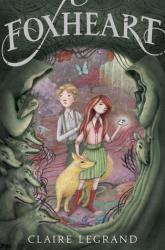
In the middle grade adventure fantasy "Foxheart", a young girl and her pet dog Fox must venture out into a strange magical world to face the fearsome Wolf King, with the help of a grumpy old woman and a little boy named Sly Boots. This story was simply fantastic! Everything from the world-building to the character development was incredibly well-written. The beginning is a little slow, but once the action begins, it moves very quickly. The plot twists were completely unexpected and I was totally invested in the story.
The only negatives I may add is that some of the side-quests that were taken on the journey didn't seem particularly necessary. Some were vital to the plot, while others seemed to just sort of fill the time. Nevertheless, I was engrossed. While this book is actually geared towards middle-schoolers, I'm not sure I recommend it to someone younger than twelve, as it was pretty violent. But, if that's not a problem, then definitely pick up this amazing book ASAP!
-Grade 12
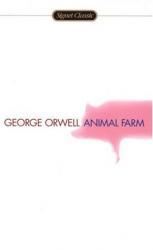
"Animal Farm" by George Orwell is about a seemingly normal farm that turns against their farmer. The animals take over the farm with the help of their leaders who are pigs. After all the humans are gone from the farm they continue under the rule of the pigs and create a system of rules to follow as a guideline for their new life. Everything goes well until one of the pigs, Napoleon, uses the dogs he trained to remove the other leader, Snowball, from the animal farm. With Snowball gone Napoleon takes complete control of the farm. He alters the rules made by Snowball, abuses his power, and makes poor decisions that negatively affect the other animals. One of their rules/guidelines was that humans were evil and not to be associated with.
Napoleon breaks that rule many times starting with making a trade of wood with another farm run by a farmer. They get scammed from the exchange with the human, but that doesn't stop Napoleon from dealing with humans. He goes to the extent of not telling the fellow animals the truth and putting all pigs above everyone else. From there things get progressively worse until Napoleon eventually befriends the humans along with the other pigs. They become so much like the humans that it gets to the point that the pigs are basically humans.
I would recommend the book. "Animal Farm" is interesting and in my opinion is in a sense satire, so I really enjoyed it. I read this book because I was planning on reading 1984 by the same author for a BTS theory and wanted to read other books by George Orwell. I kind of could relate to some of the animals because when they disagreed with Napoleon they brought up good points, but no one listened to them. The ending is very surprising and the book isn't predictable.
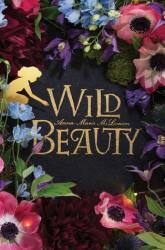
The book Wild Beauty is a vibrant tale of the cursed Nomeolvides women who are able to grow plants using magic. Their curse is that they are unable to leave their home at La Pradera without dying. This book is a wonderful exploration of love, family, life, and lies. Wild Beauty includes exploration into sexuality and the bonds we share with our family. Wild Beauty is one of the best books I've read in a long time because of it's depth and true dive into the human soul. This book is great for readers who want to pick up a book for a colourful story and not have it continued in a series (I personally have gotten tired of every book being a series).
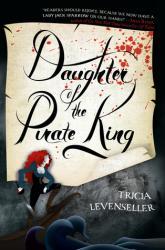
The book Daughter of the Pirate King is a thrilling story about a pirate princess who is captured by an enemy ship on a mission for her father. This story follows Alosa and her mission to retrieve part of the map to the island of the Sirens. I really enjoyed this book for it's humour and wit, along with the progressive plot that kept the story flowing. This book keeps you guessing for answers as it alludes to many things you might be able to figure out if you read between the lines. I appreciated the complexities of this book and cannot wait to read the sequel. I would highly suggest this book to readers who love action and humour.
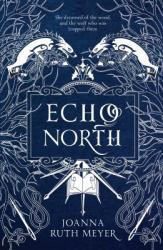
Would you all like to know what kept me up, new years eve, until 1 am? It was not the obvious fact that it was new year’s eve, and staying up until 12am was what we are all supposed to do, right? No! It was the simple reason, that I was spellbound and entranced, by this beautiful fairy tale of a book, and could not get away until I knew what happened. This tale captivated me and wouldn’t let go. This fable is a brilliant and magical retelling of a Norwegian tale called East of the Sun West of the Moon with references to other fairytales smattered throughout including Tam Lin and Psyche.
It’s basic premise is that one day after her father leaves town and mysteriously disappears, Echo Alkaev goes to look for him. She finds him on the brink of death. In order to save him she is sucked into a deal, by the same talking white wolf which disfigured her face and whom, she saved years before. A deal that will define and change the rest of her life. Live with me for a year in my enchanted house under the mountain, and I will save your father. There is only one rule, you cannot look upon me at night. Desperate and scared, and propelled by the mystery surrounding him, she does as she is asked.
She is soon launched into a magical world she never knew existed. With an enchanted house; in each room a different magical wonder, woven together like a tapestry; a magical library, with books explored through mirrors that one could travel into and experience, the four winds, a witch, a goddess and, a dreadful curse; Echo finds this world, on the edge of magic itself, dark, mysterious, lonely, full of peril, and wonder, and fantastical beyond belief. But more importantly, she finds a resiliency and strength in herself she never knew she possessed, the capacity to love beyond belief, and the courage to do what’s right even in the most dangerous of circumstances.
This book is filled with so many layers, it’s impossible to describe them all here, but suffice it to say, that if you let it, this story will weave itself into an incredible tapestry around you. It’s filled with so many different worlds that I just wanted to dive into and stay there forever. It’s filled with likable and relateablecharacters that felt like friends. Hal, the love interest, the tortured and lonely white wolf, Echo, the heroine, and so many lovable side characters, I can’t choose. It’s filled with vivid prose and world building and just so much goodness, and magic, and love, I just can’t even….
All I can say is pick up this book when it comes out. If you love fairy tales, and magic and heart felt story telling that will get you lost in worlds you don’t want to leave, and heart wrenching secrets that will make you happy and sad all at the same time. Than do yourself a favor and pick up this wonderful, fable! Total5 star read for me all the way! Thank you to Netgalley and Page Street Publishing for a Digital Review Copy for review. This comes out January 15 but you can pre order it, or put it on hold at your local library today!
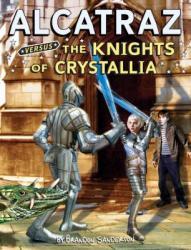
You know, it’s difficult to review a book that already highlights its flaws in the text itself. Part of me wonders if the reviews from the second book in the series were bad enough to warrant this kind of meta self-awareness. In the end, while Alcatraz Versus the Knights of Crystallia does take the time to address these weaknesses in its story and characters, it still doesn’t excuse the fact that they’re in there in the first place. These winking soliloquies seem to gloss over the fact that the book knows what’s wrong with it, but instead decides to gloss over it with self-reference instead of fixing the root of the problems themselves.
By this point in the series, I have come to terms with its middle-grade silliness and occasional bathroom humor. I loved the rule-breaking first book in the series, only to become annoyed by this constant fourth-wall breaking that happened in book two. By book three—this book—I finally came to terms with the fact that I’m not the target audience for this book, despite how well-written it is and how intricately its fantasy world has been created.
Perhaps due to my acceptance of this series for what it is, I felt the plot and character development were better in this part of the series—even if it did seem to trend toward “after school special” territory more often than not. Not only did we get to see more of Alcatraz’s parents (although, not nearly enough in my opinion), there was a lot more world-building that helped to flesh out this strange land introduced in previous volumes. Plus, the character who was a former librarian was (and is) probably my favorite character in the series right now.
More of the same self-aware silliness from Brandon Sanderson, I give Alcatraz Versus the Knights of Crystallia 4.0 stars out of 5.
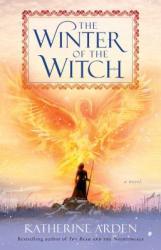
In everyone’s reading adventures they find that there are those books they come across that they like, some they love, and then there are those books that resonate so deeply, that you say to yourself and all who will listen “this is why I read.” Its not just the stunning world building, the lyrical prose, or the deep character development, but something more, that speaks to your soul, about who you truly are or what the world around you is really like. Something that can’t always be expressed through spoken word or any other means, expect through story. This is what Katherine Arden’s The Winter of the Witch has done for me.
Picking up right where The Girl in the Tower had left off with Rus in shambles and the people needing to blame someone for what happened to their city they naturally turn to Vasya. I am not going to try to explain the rest of the plot because so much happens. But suffice it to say that in this one there is so much more wintery magic, more of the winter king, everyone’s favorite hero, and so much more action and adventure I could barely keep up.
This book flows seamlessly from the 2nd to the third one without taking a single breath. And the blending of the historical and fantastical is so complete it totally had me believing that 13th century Rus existed side by side with this wintery magical world called midnight and had me longing to time travel so I can visit it. With mysterious and magical midnight roads, it’s chiriti and spirits of all types, its magical house, and a lake on the edge of worlds, it’s flying horses, its river monsters and so many other fairy tale elements this book appealed to me on so many levels. It really awakened that inner child in me, that I think is in all of us that loves fairy tales and magic, wants to be accepted and loved but also wants to have purpose and feel needed. Their was just so much about this fable and Vasya as a character that spoke to my soul that it’s hard to express it all in one measily review.
Vasya also grows so much into her power in this tale. She really discovers her identity and the book delves not only into more of who she and is becoming but also who her family is and their magical legacy. I really grew to love Vasya as a character and her determination to never give up even in the most difficult of circumstances, her love of her city and people, her strength, and how she doesn’t just accept her circumstances but fights for better things and saves herself and those around her.
Can we also talk about Vasya and Morozko relationship for a second. I love their relationship and think it is a great representation of what love in real life is often like. I love how they grow into their relationship, and that she loves him but doesn’t always love everything about him or the choices he makes. It proves what is often true about love that it is not always magic and sunshine and unicorns but can often be difficult. It often requires sacrifice and one to be selfless enough to make sacrifices. It also requires each partner to live with each other in daily life with all their imperfections no matter how much it annoys and frustrates you. I love the fact that, though Morozoko is this ancient powerful being, his character also has imperfections and issues and his own sorrows that Vasya has to learn to live with. I also love that they save each other in more ways than one, and in the scenes when they do connect it is often tender and beautiful and heart wrenching all at the same time.
Beyond the character development, the story itself is filled with lush and atmospheric imagery, beautiful and lyrical prose, and quirky and whimsical details that speak to my heart childhood heart. I also, being a history major, really appreciate the research done for this series with regards to historical detail. In history we call this establishing historical context, putting the person we are studying in their historical environment within the whole of history. It blended Vasya’s magical world and grounded her in a specific place in history seamlessly.
All this to say I loved this book and this series! Both are a solid 5 stars! And when it comes out next Tuesday Jan 8, run, don’t walk to your local library or book store to get this beautiful fable and complete your collection of one of the best series of all time. Seriously it’s up there with CS Lewis and Tolkien for me ya’ll. Thank you to Edelweiss and Del Ray for my Digital Review Copy for review!
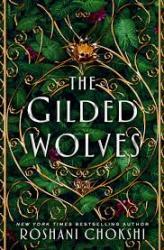
Severin’s legacy has been stolen. And he wants it back. As the sole heir to the House of Vanth, leading it should be his birthright. But folks from two of the other three houses stopped him from assuming the mantle of head of House Vanth. So when a secret society, the Order of Babel, approaches him and promises him his true inheritance in exchange for an artifact, he agrees to find the artifact along with his crew.
I enjoyed this one, though it isn’t without its flaws. Normally I end a review with my complaints, but in this case my main issue is also a positive so we’ll just start there! This book is quite similar to Six of Crows. Arguably a bit too similar. I mean, there are character analogs (Severin is fairly close to Kaz, Laila is like a Inej/Nina hybrid), and aspects of the plot are pretty similar as well. It felt like I was reading really incredible fanfiction on occasion. The thing is, though, I loved Six of Crows, so I really ended up enjoying this book too. Where Six of Crows is gorgeously bleak, The Gilded Wolves is exuberantly lavish. Set in late 19th century Paris, the trappings of this book are dazzling. Each scene is more lush than the last, and our characters’ surroundings are brought to life in the most whimsical of ways. Magical extravagance abounds, and I had the best time imagining the various rooms, secret chambers and tunnels. The world building was cool, although it occasionally felt convoluted. Overall, though, the author manages to blend religion and science and math, which is really no easy feat. The other thing that I really liked about this book is that the cast is very diverse in race, ethnicity and sexuality and that the author makes commentary about important, relevant issues such as colonialism, racism, and immigration.
I’ve read a few other books by this author, one that I hated (Star Touched Queen) and one that I enjoyed (Aru Shah). This one was much closer to an Aru read for me, although I do find that the rich prose reads as purple on occasion. There will obviously be a sequel, and I’ll definitely give that a go when it comes out in something like two years. I think a this book may also improve upon a reread. Some of the characters were a bit hard to keep track of - when the villain was ultimately revealed, I was like…who was that again? The end also felt super rushed and disjointed, and I think several of the plot points and character developments introduced might have made more sense at the top of the next book.
TLDR: A lavish heist and adventure fantasy for readers of Leigh Bardugo’s Six of Crows, Ryan Graudin’s Invictus or Dan Brown’s The Da Vinci Code. I think most readers of YA fantasy will like this one – I did! 3.5 stars.
Thanks to Netgalley and St. Martin’s Press for the advance copy which I received in exchange for an unbiased review. The Gilded Wolves will be available for purchase on 15 January 2019, but you can put your copy on hold today!

Back in 2016, I saw advertisements for a TV show adaptation of the original Shannara trilogy, likely trying to cash in on the success of Game of Thrones. While I never watched the show, I remembered enough from these trailers that I was able to recognize that the plot of the first book in the series, The Sword of Shannara , was not the plot of the series. However, when I started reading the next book in the series, The Elfstones of Shannara, suddenly memories of the TV show came to mind. Having finished this book, I can see why the TV show wanted to start here.
I didn’t particularly care for the derivative Sword of Shannara, as it seemed to steal all its ideas from The Lord of the Rings. While The Elfstones of Shannara still appears to take influence from this quintessential epic fantasy, there are enough other fantasy tropes thrown in to make it feel at least somewhat more original. Plus, the strength of the story in this book merely highlighted how unnecessary The Sword of Shannara was, as it basically threw away all the main characters from that book, relegating them to “distant grandfather” status and maintaining the only truly interesting character, the druid, for this book.
The strength of The Elfstones of Shannara comes from its main plotline that finds a boy and girl on a quest to save a magical tree that is dying, thus allowing demons to re-enter the realm. All the other side stories, like the battle/war that was happening, and all the familial and political drama that went with it, I could have done without. Mostly, these minor characters and plots didn’t seem fleshed out enough for me to care. Alternatively, the main story was exciting and had pretty good pacing for a fantasy book that sometimes spends too many words on descriptions and world-building that don’t matter.
A much superior follow-up to The Sword of Shannara, I give The Elfstones of Shannara 3.5 stars out of 5.

Coming from the author of "King Solomon's Mines" and creator of Allan Quartermain, you can expect a terrific turn of the century, adventure story. Written as the sequel to "She", "Ayesha: The Return of She" stands on its own, and I find it even more enjoyable than the original story (but "She" does make for a good prequel - as I read them out of sequence). Our hero Leo, sets out with his friend to seek out his long lost love. This leads them to the most remote of areas, across vast deserts, and over treacherous mountains. When they reach the empire of Kaloon, the Khania Atene swears that she is the woman Leo is searching for, but he is unsure, and wishes to consult with the mysterious Hesea, an ancient priestess of the mountain, who has sent for him. Atene will risk everything, even war with the people of the mountain, to keep Leo by her side, even though he wishes to see the Hesea. Is Atene the woman Leo is seeking? Who is the cryptic Hesea? What dangers await Leo and his friend, both in Kaloon, and on the mountain?
This story was originally published in a serialized form in 1904-1905, with gorgeous Art Nouveau illustrations. If you can find it, I highly recommend reading a reprint that includes the original illustrations. One of my favorite books of all time!
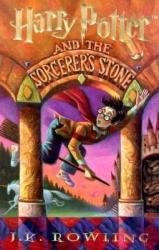
Harry Potter and the Philosopher's Stone is a classic for today's generation. It tells the story of a boy named Harry Potter who finds out he is a wizard and proceeds to attend a wizarding school and encounter the dark wizard who killed his parents. This story was a large part of my childhood and one of the reasons I enjoy reading so much. Although it is a very easy read and truly a children's story, the Harry Potter books are magical for all ages and I would suggest everyone read them.
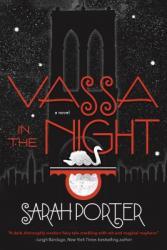
In this wildly imaginative and wacky story, the main character Vassa and her trusty living doll Erg must survive the dangers of a magical Brooklyn, convenience store, and the possibility of beheading. This story takes a modern and dark take on the Russian folktale "Vassilissa the Beautiful" as Vassa struggles with who she is and what she wants from the world. I found this book very interesting because it is much different from many of the other books I have read. This story is odd, quirky, and disconcerting to a degree as for a while you have no idea what is going on. The whole book almost seems to be an odd delusion or hallucination. I enjoyed reading this book because I am so used to flat or normal stories that have a clear indication of whats going on and it was fun to have to think and question what was going on.
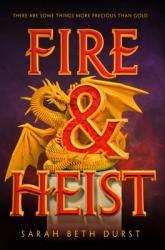
Sky’s mother has disappeared. Assuming that their mother is dead, Sky, her three brothers, and their father feel unmoored. Especially because their mother disappeared in the midst of a heist she was committing – heists are fairly normal for wyverns as they are always trying to increase their horde, but this heist was a direct attack on Sky’s boyfriend’s family. As Sky learns more about the failed heist, she realizes that her squeaky-clean-now- ex-boyfriend’s family might be hiding something. And Sky’s going to find out what it is, and save her mother…or suffer her mother’s fate.
I wanted to read this book as I’ve read Durst’s adult fantasy series the Queens of Renthia, and I really enjoyed it! When I was approved for Fire & Heist on Netgalley, I was pretty excited. And I liked the book – it’s a solid YA standalone fantasy. The worldbuilding and plot are cool, though the characters are a little one dimensional. My biggest complaint was that the book straddled two worlds and tones, and I think it would’ve been a bit better had it leaned into one a little more. The book was part quirky middle grade fiction, part dark YA fantasy. Had it gone full bore in either direction, it would’ve been a higher quality book. As it is, it’s a fun heist fantasy with some dragon flavorings which makes for a fast, amusing read.
This one would be a great read for younger teens and mature tweens who aren’t quite yet ready for Bardugo’s Six of Crows or Hartman’s Seraphina. I liked it! 3 stars.
Thanks to Netgalley and Crown Books for Young Readers for the advance copy, which was provided in exchange for an unbiased review. Fire & Heist is available to put on hold now!
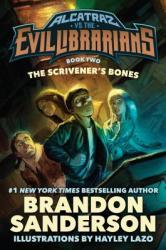
Earlier this year, I read Alcatraz Versus the Evil Librarians and absolutely loved it. Consequently, I had high hopes for the next book in this series, Alcatraz Versus the Scrivener’s Bones. While there was still the same amount of self-awareness and humor in this book, it felt a little…off. Perhaps I should have read these two books closer together, but I had some trouble coming up to speed in the beginning and wasn’t entirely sure why the “goal” of this book was to find Alcatraz’s father. In any case, Sanderson’s world-building is still in top form here.
Of course, the “cute” way that this series was self-aware when I read the first book was a bit more annoying this time around. It almost felt like every chapter had to have a soliloquy, even if it didn’t link itself to where the plot was at the time—which often broke the flow of the action. Similarly, while the randomness introduced in Versus the Evil Librarians did seem to have some purpose, it seemed to have less of a purpose in this book. It felt like it was randomness for randomness sake, even if some of it did eventually come into play.
Despite the things that made the first book endearing becoming a little more grating in this book, I did enjoy the magic system, and more in-depth explanations of the lore were explored in this sequel. Things like why the main character is named Alcatraz and a better explanation of the “powers” of his family members helped round out the questions that weren’t necessarily obvious in the first book but still needed to be answered at some point anyway. The action was fantastic (if not against all laws of physics), and I wouldn’t mind seeing how the relationship between Alcatraz and Bastille develops in later books.
An amusing and well-rounded “silly fantasy,” I give Alcatraz Versus the Scrivener’s Bones 4.0 stars out of 5.
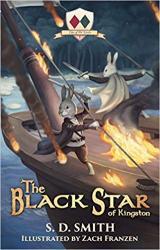
Immediately after I finished reading The Green Ember, I picked up this short story/prequel and read through it in one sitting. I had become pretty well invested in the world created in The Green Ember and wanted more of it before diving into the sequel, Ember Falls. While The Green Ember mentioned a story of The Black Star of Kingston in its main plot, I have to say that I wasn’t as impressed as I would have hoped. Sure, all the things that made The Green Ember great were mostly present in The Black Star of Kingston, but it felt a little…underdeveloped.
Once again, the strength of the plot and characters helped provide entertainment as I read this story. However, without a more comprehensive understanding of the lore of this series, I wasn’t quite sure where this story fits in with the rest of the canon. I knew it was a prequel because characters mentioned it in the first book, but did these events happen in tangent to the main backstory, or well before the fall of King Jupiter? If they happened before, how far back? It also would have been nice to have at least one setting feel familiar to the ones presented in The Green Ember.
I did also appreciate how this book—much like The Green Ember—used characters who were tradesmen first, and soldiers/sailors second. This was an element of realism that I feel is often missing in these kinds of fantasy stories. After all, people with a profession will have certain skills in battle or at sea that can come in handy. If anything, it helps to teach children that we shouldn’t always focus on war. If war happens, we should step up and fight, but we shouldn’t focus on professions of war as our primary purpose of being.
A pretty good side story that was mentioned in The Green Ember, I give The Black Star of Kingston 4.0 stars out of 5.
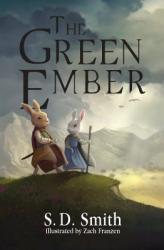
On the other end of the spectrum of “fantasy rabbit” stories from Watership Down , we have The Green Ember, the first in a series that probably could have been written without the animal trappings and still been a good story. Where Watership Down had very rabbit-like characters interacting with the human world, The Green Ember has very person-like characters interacting with an animal world. Occasionally, the attributes that make the rabbits unique were used—especially in the battle sequences—but there were often moments when I forgot that these characters were rabbits.
I felt the cuteness of rabbits, and the scariness of wolves and hawks, help reach a younger audience without directly confronting them with the realities of the scary world around them. After all, if it was people vs. people in this book, then the intended audience might miss out on some of the important morals and lessons contained therein. Having a clearly evil force in opposition to the rabbits helped to define who the good guys and bad guys were, while also leaving room for traitorous rabbits—which itself feels a little odd, considering the predator/prey relationship between the two sides.
Despite some of these weaker points, The Green Ember is a fantastic story. There might be a few too many characters at points, all with slightly different names for the same individual, but the complexity of the plot is solid enough that children should be able to follow along and parents will likely also be surprised by the few twists and turns it takes. Clearly the first part in a series, The Green Ember does an excellent job of wrapping up most of the activities and subplots it started, while also presenting a somewhat clear direction for where it will go in the future.
A fantasy adventure perfect for kids and adults, I give The Green Ember 4.5 stars out of 5.
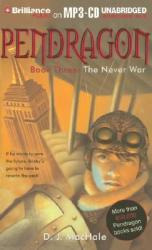
The Never War, by D. J. MacHale, is the third book in the Pendragon series. The series take place in a dystopian universe where multiple "territories" exist. This time, Bobby Pendragon, the main protagonist, is forced to set out to "First Earth" to protect New York City during the year 1937. The book's setting is amazing and cleverly crafted, as always, and the plot is intruiguing as well. The characters are also well developed and their identities start to mature after the first two books. The antagonist Saint Dane is also fascinating as his entire identity is shrouded in mystery.
Overall, the book is a great adventure novel and I would recommend it to anyone who is interested in books like the Harry Potter series.
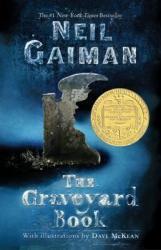
Nobody Owens (Bod for short) grows up in an ancient cemetery, raised by the spirits who reside there. As he becomes older, along with his school lessons and the special abilities given to him with the “freedom of the graveyard”, Bod must discover the secrets behind the death of his birth family, and the "Jacks of All Trades” (a dangerous secret society). Along the way Bod learns from various night creatures in addition to his extended family of ghosts, including ghouls, a witch, a werewolf, and a vampire. He must use all the knowledge that he acquires to fulfill his pivotal role in defeating the Jacks.
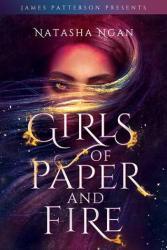
Every year one girl from the lowest caste in each of the 8 provinces is selected to be a Paper Girl - a concubine to the king. Usually, the girls choose to put themselves forth for the selection. But this year, there will be nine girls. Lei, the ninth, was ripped from her home by a General trying to curry favor with the King. And unlike the other paper girls, this was in no way a choice for her. As she learns more about her fellow Paper Girls and life in the palace, she becomes further disgusted with the caste systems and the concept of Paper Girls. And she'll do everything in her limited power to defy the king - even if it costs her her life.
Girls of Paper and Fire was awesome. I've been burned by heavily hyped diverse YA fantasy lately (Children of Blood and Bone, Mirage), but luckily for me, this one did not disappoint. The premise sounded fairly...gross for lack of a better word - a girl stripped from her home against her will to become a concubine to the king. You know there's going to be some unconsensual sex happening. And there was, but it was handled really well by the author. She takes a very sensitive issue and does not sensationalize it. In fact, its presented in such a way that women who have had similar experiences might find some solace in the book, which, if you read the Afterword, was clearly the author's intention.
Unlike some YA fantasy, this was a slowly paced book that was mostly about developing our main character. Lei really grew as a woman and a person throughout the course of the book. She stands up for her beliefs, herself, her body, even though it almost gets her killed. There's also romance, and its a slowly developed, realistic story of love in the worst of times. The worldbuilding was stunning - the setting was Malaysia inspired, and the formation of the three different castes and their traditions was well thought out and presented in such as way as to be simultaneously creepy and gorgeous. My two complaints are fairly minor: there were a few very predictable plot elements, and the writing occasionally leaned into too flowery territory. Otherwise, though, I loved it.
If you are looking for a feminist fantasy read with excellent worldbuilding and character development, you won't go wrong with Girls of Paper and Fire. 5 stars.
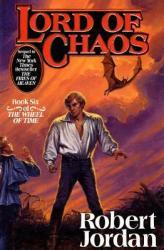
While the first five novels in the Wheel of Time series were near masterpieces in their own right, the sixth entry is where the series begins to peter out a bit. Whereas the previous novels were compelling high fantasy adventures, this one seems to exist in more of the vein of a drama. Intense magical battles and high stakes plots to unravel are here replaced with the female characters prattling on about the color and feel of their dresses, or complaining about men with each other. Additionally, there is an enormous cast of characters to keep track of, which does tend to drag the novel down and make it more confusing than it needs to be. True, this was also a problem in the the first five novels, but compounded with the sometimes boring plot and mundane female characters it becomes a much more noticeable problem. Most of the novel is people sitting around postulating for power and talking. However, there are some things to be appreciative of, such as the political intrigue, chapters from the Forsaken point of view, and the return to Shadar Logoth, but these things just don't help the novel in the long run. I would recommend it to anyone who has read the previous five books.


